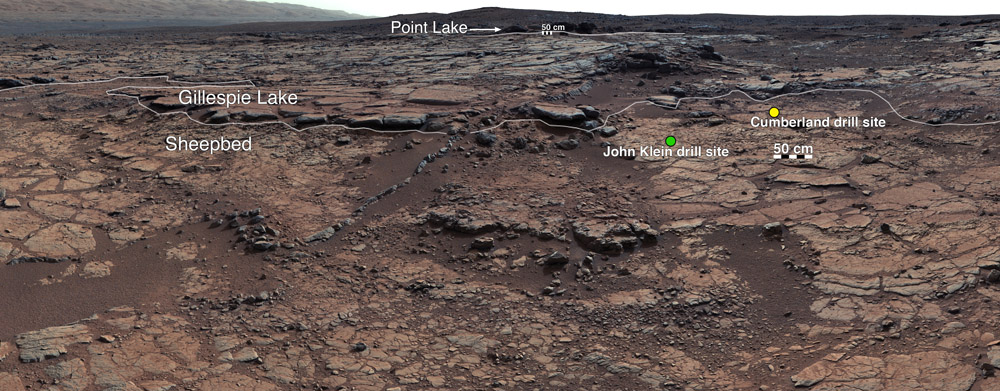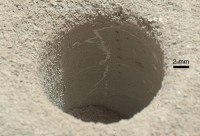This mosaic of images from Curiosity’s Mast Camera (Mastcam) shows geological members of the Yellowknife Bay formation, and the sites where Curiosity drilled into the lowest-lying member, called Sheepbed, at targets “John Klein” and “Cumberland.” (NASA/JPL-Caltech/MSSS)
Home This mosaic of images from Curiosity’s Mast Camera (Mastcam) shows geological members of the Yellowknife Bay formation, and the sites where Curiosity drilled into the lowest-lying member, called Sheepbed, at targets “John Klein” and “Cumberland.” (NASA/JPL-Caltech/MSSS) This mosaic of images from Curiosity's Mast Camera (Mastcam) shows geological members of the Yellowknife Bay formation, and the sites where Curiosity drilled into the lowest-lying member, called Sheepbed, at targets "John Klein" and "Cumberland." (NASA/JPL-Caltech/MSSS)



